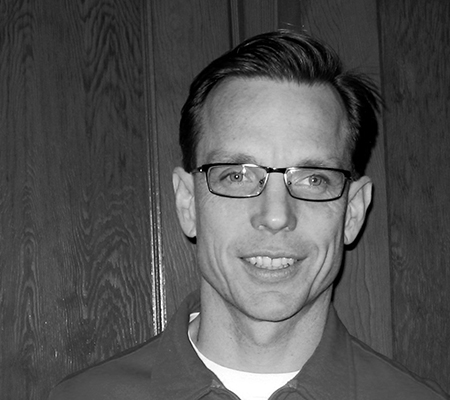Reposted from Louder Than War who picked it up from Randal Doane’s blog page:
http://stealingalltransmissions.wordpress.com/
October 3, 2014 by Randal Doane

In this feature Randal Doane argues that U2′s latest single, The Miracle (of Joey Ramone), ostensibly an homage to punk, fails in one respect: “it’s too damn long.” He also has a few words to say about the bands getting into bed with Apple. Read on to find out what!
I adore U2’s “The Miracle (of Joey Ramone)”: the sound, the sentiment, and the humility of the narrative. Even as a television commercial, with its montage-in-silhouette of Joey Ramone, Patti Smith, and all four members of The Clash (I’m counting here The Edge’s impersonation of Paul Simonon), seems fine, for the most part. There is, however, one big thing wrong with this song, and this error is so fundamental, so How-to-be-a-Kick-Ass-Rock-Band-101, that it’s amazing U2-de-camp was capable of such a gaffe. At four minutes and 15 seconds, “The Miracle” is just too damn long.
The power of Apple, and thereby the power of U2, allowed Bono and co. to secure a nice paycheck and, in accordance with Bono’s desire, to gift Songs of Innocence to “over half a billion subscribers to iTunes.” The guiding desire for Innocence itself, Bono noted, was to capture the spirit of their teenage kicks and afflictions: “I went back and started listening to all the music that made us start a rock band … It gave us a reason to exist again.” For “The Miracle,” Bono draws upon middle-age wisdom to cook up the raw sentiments of adolescence into a lovely tribute to The Ramones, The Clash, and others.
Had U2 decided to go the usual route through the marketplace, being on the long side of four minutes would make sense, because three-minute heroes are so rare in the iTunes age. Today, hit singles not only have more hooks per minute, due to our limited attention spans, but more minutes per song, because Americans like supersized commodities and, I suspect, are inclined to pirate tunes less than four minutes long.
But in not-so-innocent fashion, U2 bypassed the marketplace for Songs, and thereby missed a grand opportunity to kick-start a renaissance of three-minute heroics with a proper homage to their own three-minute heroes. For U2, the prevailing rules for assembling pop songs didn’t apply. They could have released anything: a mini-opera, the separate tracks that make up “The Miracle,” bits of dialogue from the recording sessions. They could have affirmed the beauty in brevity found on The Ramones (1976) and The Clash (1977), which—in toto—have 11 tracks clock in under two minutes, and 13 of the remaining 14 wrap up within three minutes and change. U2 could have displayed their formidable musical chops, and still affirmed the punk edict that anything is possible. With the chance to upset the Apple cart, though, U2 didn’t, or couldn’t. With U2 in charge, the master’s house remains safe from the master’s tools.
Live performances of “The Miracle” may yet, of course, inspire a blinding miracle akin to seeing The Ramones or The Clash, circa 1978. As Joe Strummer noted, the future is unwritten and thereby open to possibility. The range of those possibilities may be gleaned, though, from a closer look at “The Miracle” as an aesthetic and political object.
Musically, it’s pretty clear Bono didn’t get too deep into the oeuvre of The Clash before finding a musical template for the layered opening of “The Miracle.” “Janie Jones” (2:09), the first track on The Clash, begins with a lone snare drum and is joined, respectively, by Strummer’s guitar, his voice, his voice and guitar, and the voices of Strummer, Jones, and Simonon and the ensemble of instruments. “The Miracle,” in turn, begins with a vocal chorus over rat-a-tat drumsticks and sparse piano, and segues with a drum roll into a solo guitar power chord sequence, and returns to the vocal chorus over guitar and drums.
The politics of “Miracle” are two-fold. First, as Bono indicates on the liner notes, the inspiration came from seeing The Ramones in September 1978 at the state cinema in Dublin. “The world stopped long enough for us to get on it. Even though we only saw half the show, it became one of the great nights of our life.” As The Edge also surmised, “We didn’t really believe that we could take it seriously, becoming a rock group. But after that gig, and that of The Clash, it seemed to us we could make a living off our music. You could almost say that U2 exists thanks to them.”
When I saw The Ramones with 300 other pinheads in September 1986 at Club Metro in Riverside, California, the crowd surged forward with the first downstroke of Johnny’s guitar and, within minutes, the bouncers behind the barricade bailed out as we collectively, inadvertently, pinned the plywood to the stage. Sternum to shoulder, hip to hip, the crowd swayed and pitched, and we rode the oceanic feeling of a fleeting sublime that burned upon our epidermis and our memories. (I figure being male and 5’10” lent a liberating quality to this experience.)
This collective effervescence, the abandoning of the self for the transitory connection to something larger, physically and sonically, constituted a key feature of rock ‘n’ roll by the turn of the 21st century, for male and female bodies alike. One of the coolest features of riot-grrl shows was the lack of tolerance for boyish belligerence in the oceanic turbulence in front of the stage. The freedom of this turbulence, too, grew out of the prohibition of recording devices of any kind at every bastion of rock ‘n’ roll. (Yes, the Grateful Dead and Phish encouraged recording, but the individual effervescence buoyed by better-living-through-chemistry lent such affairs an illusory, collective dimension.) Such turbulence cannot be found, though, in crowds where half the attendees are effectively elsewhere: with their cameras up and rolling, they dice up the apex of analog life into digital bits, driven by fear of their future boredom, or of fear of not having properly distributed the experience through the digital synapses of (quasi-) social media. (Rock journalists, especially those inclined to review my book, are of course completely exonerated for such transgressions.) Sure, history would have proceeded apace with neither Apple nor U2, but they are still both culpable parties.
Rather than a poignant tribute, then, “The Miracle” resonates with the ache of a requiem, due to U2’s complicity in the digital broadside against what remains of the analog qualities of fandom. (I’d be totally fine, for example, with U2 sponsoring a new generation of iPhonographs—or better yet, iTubeAmps.) iPhones, by design or accident, command the user to remain motionless, to accumulate rather than participate. Fans intent upon standing stock still effectively arrest the ebb of bodies with phones-in-pockets focused on the moment-at-hand, determined to be completely free of the fear of missing out.
“There’s not much rock in the zeitgeist,” says longtime U2 comrade Jimmy Iovine. “So what the band were trying to do is defy gravity. And whatever tools you can use to do that, you should use.” I’m not so sure. I have little difficulty being poptimistic about the song itself, and about U2 in general. (My favorite U2 album is Zooropa.) Still, it seems naïve to be poptimistic about the technology, or to imagine it as unconditionally liberating. As the band assembles its legacy, U2 seems less skeptical. I’ll turn up the radio when “Miracle” comes on, but I’m afraid it will have a limited shelf-life. Had U2 made the song a bit shorter, it’s duration in pop history might well have been a little longer.


